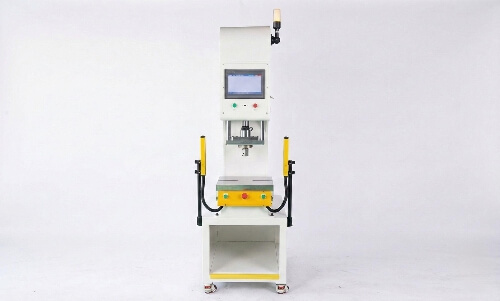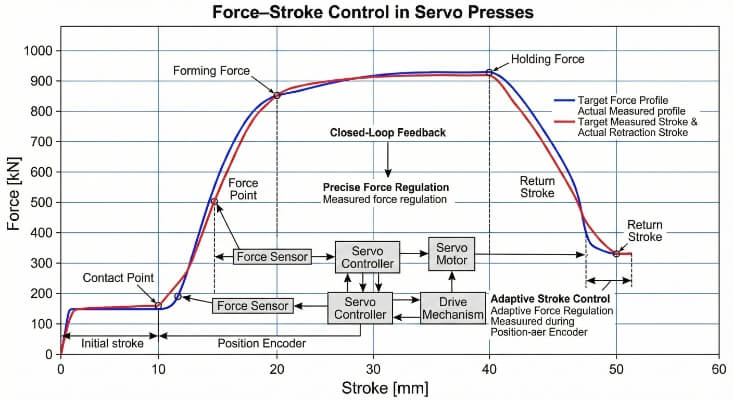Il design dei prodotti moderni si sta orientando verso materiali più leggeri, più resistenti e più duraturi. Questo cambiamento crea nuove sfide quando si tratta di tagliare e modellare i compositi. La lavorazione CNC dei compositi aiuta a risolvere queste sfide rendendo i pezzi più precisi e consegnandoli più velocemente. In questo articolo esploreremo i metodi, gli usi e le idee che migliorano le modalità di produzione dei compositi nelle officine di oggi.
La lavorazione CNC dei compositi utilizza attrezzature avanzate per tagliare e modellare materiali resistenti come la fibra di carbonio e la fibra di vetro. Strumenti e metodi specializzati riducono l'usura degli utensili e mantengono la robustezza dei pezzi. Questo processo consente di realizzare pezzi leggeri per settori come quello aerospaziale, automobilistico e medico.
I compositi stanno cambiando il modo in cui le aziende progettano e producono i pezzi. Nuovi strumenti e macchine aprono le porte a nuove possibilità. Continuate a leggere per scoprire come questi cambiamenti potrebbero aiutare il vostro prossimo progetto.
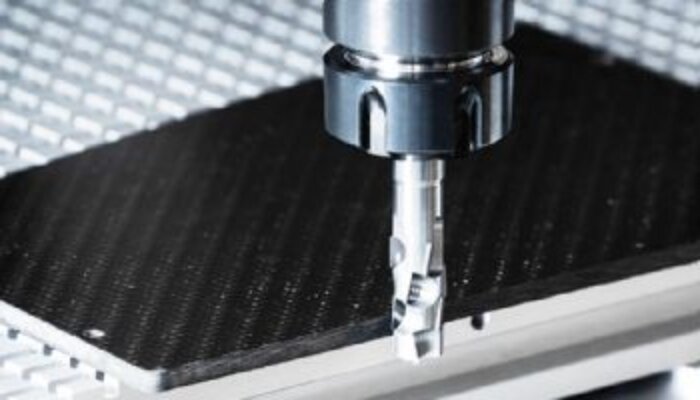
Cosa sono i materiali compositi?
I compositi si ottengono combinando due o più materiali. Uno dà forza e l'altro lega il tutto. Esempi comuni sono la fibra di carbonio, la fibra di vetro e il kevlar.
Sono leggeri ma robusti e resistono al calore e alla corrosione. Ecco perché molte industrie li utilizzano per componenti ad alte prestazioni.
Un composito ha due parti principali. Il rinforzo (come le fibre di carbonio o di vetro) aggiunge forza e la matrice (come l'epossidica o la resina) mantiene le fibre in posizione. Insieme, creano un materiale più resistente delle singole parti.
I compositi si presentano in molte forme: fogli, tubi o blocchi stratificati. Ogni forma può richiedere una strategia di lavorazione diversa.
Perché la lavorazione CNC dei compositi?
La lavorazione CNC consente di tagliare con precisione le parti in composito. Aiuta a modellare forme complesse con tolleranze ristrette. Questo processo utilizza il controllo del computer per muovere l'utensile e rimuovere il materiale.
Gli utensili tradizionali possono sfilacciare le fibre o surriscaldare la resina. La lavorazione dei compositi richiede utensili affilati, velocità inferiori e strategie speciali.
Le macchine CNC eseguono tagli ripetibili, riducono l'errore umano e sono in grado di gestire piccoli prototipi e grandi serie con la stessa precisione.
Tipi di materiali compositi
I compositi combinano due o più materiali per creare qualcosa di più consistente delle singole parti. Per la lavorazione CNC, alcuni compositi funzionano meglio di altri. Ecco i tipi più comuni:
Polimeri rinforzati con fibre di carbonio (CFRP)
Il CFRP combina le fibre di carbonio con una resina polimerica. È leggero e potente, resiste alla corrosione e può sopportare carichi elevati.
Questo materiale è standard nel settore aerospaziale, nelle attrezzature sportive e nelle parti da corsa. Tuttavia, è fragile. Può rompersi in presenza di sollecitazioni specifiche. La lavorazione del CFRP richiede attenzione per evitare il distacco delle fibre e la delaminazione.
Polimeri rinforzati con fibre di vetro (GFRP)
Il GFRP utilizza fibre di vetro al posto del carbonio. È più economico del CFRP e offre comunque una buona resistenza e rigidità.
È utilizzato in componenti marini, pale di turbine eoliche e involucri elettronici. Il GFRP è più flessibile del CFRP, ma, a causa della durezza delle fibre di vetro, consuma più rapidamente gli utensili.
Compositi in Kevlar
Il kevlar è noto per la sua resistenza agli urti. Viene utilizzato in armature, caschi e pannelli protettivi.
Il kevlar è resistente ma rigido da lavorare. Tende a sfilacciarsi e a sfaldarsi, quindi sono necessari utensili da taglio speciali e bordi molto affilati. La durata degli utensili è spesso breve.
Compositi termoindurenti e termoplastici
I compositi termoindurenti utilizzano resine che polimerizzano in modo permanente. Una volta indurite, non possono essere rimodellate. Sono stabili alle alte temperature e resistono agli agenti chimici.
I compositi termoplastici si ammorbidiscono con il calore e possono essere rimodellati. Sono più adatti al riciclaggio e più veloci da lavorare. Inoltre, resistono meglio agli urti.
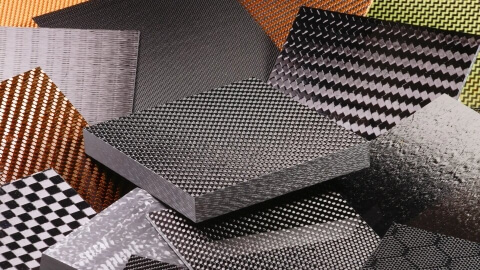
Guida graduale alla lavorazione CNC dei compositi
La lavorazione dei materiali compositi richiede un'attenta pianificazione per evitare delaminazioni, sfilacciamenti o danni agli utensili. Seguite questi passaggi per ottenere i migliori risultati:
Fase 1: Selezione del materiale
Scegliere il composito giusto in base all'uso del pezzo. Considerate il carico, il calore e l'esposizione agli agenti chimici. Inoltre, verificate come il materiale reagisce alle forze di taglio.
Fase 2: Progettazione per la lavorazione
Mantenere un design semplice del pezzo. Evitate gli angoli interni acuti. Utilizzate i raggi dove possibile. Aggiungete un'aliquota supplementare per la rifilatura. Ridurre gli elementi che causano vibrazioni dell'utensile.
Fase 3: Selezione dello strumento
Utilizzare utensili in diamante policristallino (PCD) o in carburo. Scegliere bordi affilati e design specifici delle scanalature per ridurre lo sfilacciamento. Gli utensili rivestiti possono migliorare la durata e la qualità del taglio.
Fase 4: fissaggio
Fissare saldamente il pezzo da lavorare. Utilizzare tavoli a vuoto o ganasce morbide per evitare di schiacciare il pezzo. Sostenere le sezioni sottili per evitare flessioni o vibrazioni durante il taglio.
Fase 5: Parametri di lavorazione
Far funzionare la macchina a velocità e avanzamenti inferiori rispetto ai metalli. Utilizzare fresatura in salita invece di quelli convenzionali. Evitare movimenti improvvisi dell'utensile. Mantenere fredda la zona di taglio con aria o nebbia, non con liquido refrigerante a diluvio.
Fase 6: Controllo qualità
Ispezionare il pezzo per verificare la presenza di delaminazione, strappi delle fibre e danni da calore. Utilizzare telecamere o sensori per controllare le caratteristiche. I controlli dimensionali aiutano a garantire la ripetibilità e l'accuratezza.
Fase 7: Post-lavorazione
Eliminare la polvere o le fibre. Se necessario, carteggiare i bordi. I sigillanti o i rivestimenti vengono applicati per proteggere le fibre esposte. Alcune parti possono richiedere l'incollaggio o la giunzione prima dell'uso.
Le principali differenze rispetto alla lavorazione CNC dei metalli
La lavorazione CNC dei compositi non è uguale a quella dei metalli. Gli utensili, le impostazioni della macchina e il processo di taglio devono essere adattati.
Comportamento del materiale e interazione con l'utensile
I metalli di solito si piegano prima di rompersi, ma i compositi no. Possono rompersi o spaccarsi se tagliati nel modo sbagliato. Quando si taglia il metallo, l'utensile si muove attraverso un blocco solido. Nei compositi, invece, l'utensile taglia strati di fibre e resina, che possono causare il sollevamento, il distacco o la rottura delle fibre.
I compositi sono anche più abrasivi della maggior parte dei metalli. Consumano più rapidamente gli utensili da taglio. Gli utensili standard possono diventare rapidamente opachi e lasciare bordi ruvidi.
Forze di taglio e velocità di avanzamento
I compositi generano forze di taglio inferiori a quelle dei metalli, ma le truppe possono cambiare improvvisamente. I percorsi dell'utensile devono rimanere regolari per evitare di danneggiare il pezzo.
Anche la velocità di avanzamento deve essere più lenta. Un movimento veloce o improvviso potrebbe incrinare la superficie o causare la separazione degli strati. È meglio eseguire molti tagli leggeri invece di un unico taglio profondo. Questo aiuta a controllare il calore e a mantenere la superficie pulita.
Sensibilità al calore e rischi di delaminazione
I metalli possono sopportare il calore elevato durante la lavorazione, ma i compositi no. Se si scaldano troppo, la resina può fondere o perdere forza. Per contenere il calore, utilizzare il raffreddamento ad aria o a nebbia. Evitare l'uso di refrigeranti alluvionali: l'eccessiva umidità può danneggiare il materiale.
La delaminazione è un problema comune. Si verifica quando l'utensile allontana gli strati, rendendo il pezzo più debole e più soggetto a guasti.
Selezione degli utensili per la lavorazione CNC dei compositi
La scelta degli utensili giusti fa la differenza tra tagli netti e materiali rovinati. Ecco quali sono i migliori per i materiali compositi:
Utensili in metallo duro contro utensili rivestiti in diamante
Gli utensili in metallo duro sono resistenti e affilati. Funzionano bene per le piccole produzioni o per il taglio di compositi più morbidi come il GFRP. Ma si consumano rapidamente quando si tagliano fibre più dure, come il carbonio o il vetro.
Gli utensili con rivestimento diamantato durano molto più a lungo. Opzioni come il diamante policristallino (PCD) o i rivestimenti simili al diamante resistono all'usura delle fibre abrasive. Questi utensili costano di più, ma sono ideali per lavori lunghi e con tolleranze ristrette.
Ottimizzazione della geometria dell'utensile
La forma dell'utensile influisce sulla qualità del taglio. I bordi affilati aiutano a ridurre lo sfilacciamento delle fibre. Le scanalature in alto e in basso aiutano ad allontanare i trucioli e a proteggere la superficie da eventuali danni.
Le frese a spirale o a fresa sono comuni per i pannelli compositi. Quando perforazioneutilizzare utensili con angoli di punta progettati per evitare di spaccare gli strati quando si entra o si esce dal foro.
Strategie di raffreddamento e lubrificazione
I compositi non reagiscono bene al refrigerante alluvionale. L'umidità eccessiva può danneggiare la resina e gli sbalzi di temperatura significativi possono portare alla formazione di crepe.
Il taglio a secco con aria compressa è spesso la scelta migliore. Aiuta a raffreddare l'utensile e allo stesso tempo elimina i trucioli.
Alcune configurazioni utilizzano il raffreddamento a nebbia con piccole quantità di fluido. In questo modo si riduce il calore e l'usura degli utensili senza bagnare il pezzo.
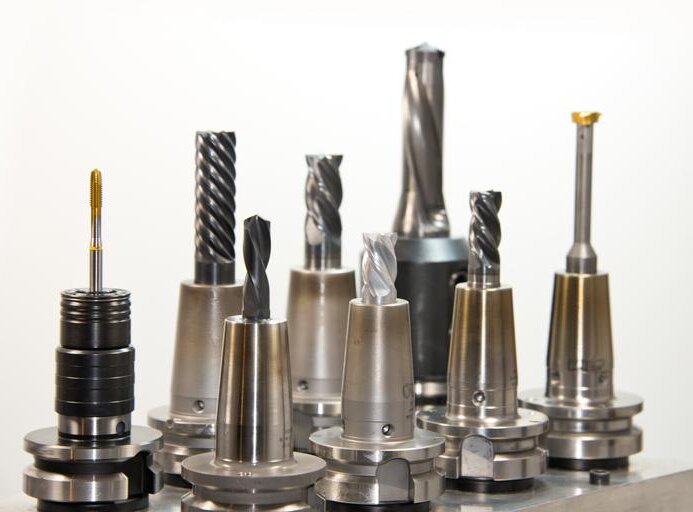
Tecniche di lavorazione dei compositi
Diverse tecniche di lavorazione possono contribuire a migliorare la qualità dei pezzi, a ridurre l'usura degli utensili e a velocizzare la produzione. Il metodo migliore dipende dal tipo di composito e dalle esigenze del pezzo.
Lavorazione ad alta velocità
Lavorazione ad alta velocità utilizza velocità di mandrino più elevate e forze di taglio inferiori. In questo modo si ottengono tagli più puliti e si riducono problemi come il distacco delle fibre o la delaminazione.
Per utilizzare bene questo metodo, è necessario disporre degli strumenti giusti. Gli utensili con rivestimento diamantato o in carburo con forme speciali sono i migliori. È inoltre essenziale mantenere i percorsi degli utensili lisci per evitare danni.
Perforazione Peck e taglio stratificato
La foratura a becco rimuove il materiale passo dopo passo. La punta entra ed esce per eliminare i trucioli e ridurre il calore, riducendo la sfilacciatura delle fibre e l'usura degli utensili.
Il taglio a strati rimuove il materiale a piccoli passi. Evita una pressione di taglio elevata e contribuisce a prevenire la separazione degli strati.
Lavorazione CNC assistita da getto d'acqua e ultrasuoni
Lavorazione a getto d'acqua Taglia i compositi utilizzando un getto d'acqua ad alta pressione mescolato a particelle abrasive. Non produce calore e funziona bene con materiali spessi o stratificati.
La lavorazione assistita da ultrasuoni aggiunge vibrazioni all'utensile. Questo rompe il materiale in modo più delicato, riducendo le forze di taglio e migliorando la precisione.
Vantaggi della lavorazione CNC dei materiali compositi
La lavorazione CNC offre molti vantaggi quando si lavora con i compositi. Questi vantaggi la rendono una scelta affidabile per creare pezzi robusti e precisi.
Elevata precisione e ripetibilità
Le macchine CNC seguono percorsi precisi basati su istruzioni programmate, ottenendo tagli precisi e bordi lisci. I pezzi rimangono coerenti, anche quando le forme sono complesse o le tolleranze sono strette.
Riduzione dei rifiuti di materiale
I materiali compositi sono costosi. La lavorazione CNC taglia solo ciò che è necessario, riducendo così gli scarti. Inoltre, riduce la possibilità di errori che potrebbero far perdere un intero pezzo.
Flessibilità nella progettazione dei pezzi
La lavorazione CNC consente di modificare rapidamente la progettazione dei pezzi. È possibile passare da un prototipo alla produzione completa senza bisogno di nuovi strumenti o impostazioni. Ciò è utile per i pezzi personalizzati o quando i progetti cambiano spesso.
Bordi puliti e finiture raffinate
Con un'impostazione adeguata, le macchine CNC possono tagliare bordi e fori puliti. Ciò riduce lo sfilacciamento delle fibre e limita la necessità di ulteriori lavori di finitura.
Produzione scalabile
La lavorazione CNC funziona bene sia per le piccole che per le grandi produzioni. Che si tratti di un pezzo o di un migliaio, il processo rimane accurato e coerente, il che lo rende adatto sia per i test che per la produzione su larga scala.
Applicazioni in tutti i settori
La lavorazione CNC consente di produrre parti in composito affidabili in molti settori. Ecco dove hanno un impatto maggiore:
Componenti aerospaziali
Nel settore aerospaziale, i componenti devono essere sia leggeri che resistenti. I componenti più leggeri aiutano a ridurre il consumo di carburante, pur rispettando gli standard di sicurezza e di prestazione. Le parti in composito lavorate a CNC sono comuni nei pannelli interni, nelle staffe, nelle coperture e nelle strutture di supporto.
Strutture leggere per il settore automobilistico
Le case automobilistiche utilizzano i materiali compositi per ridurre il peso dei veicoli. Ciò consente di risparmiare carburante e aiuta i veicoli elettrici a percorrere più strada tra una carica e l'altra. La lavorazione CNC modella parti come cruscotti, supporti per paraurti e pannelli esterni.
Attrezzature sportive
Gli attrezzi sportivi ad alte prestazioni devono essere solidi ma non pesanti. Biciclette, caschi, racchette da tennis e tavole da surf utilizzano spesso materiali compositi. La lavorazione CNC conferisce a questi componenti un aspetto pulito e una forma precisa.
Dispositivi medici
Gli strumenti e i supporti medici devono essere resistenti, leggeri e confortevoli per il paziente. I compositi sono utilizzati per protesi, tutori e parti di macchine per imaging. La lavorazione CNC facilita il rispetto di tolleranze ristrette e la creazione di forme complesse.
Migliori pratiche per una lavorazione efficiente dei compositi
Per ottenere risultati precisi e puliti con i compositi, è necessario modificare la configurazione. Seguite queste best practice per ottimizzare il vostro processo:
Utilizzare gli utensili giusti
Scegliere sempre utensili progettati per i compositi. Gli utensili in PCD o con rivestimento diamantato durano più a lungo e rimangono affilati. Usare la giusta forma di scanalatura per ridurre la sfilacciatura e l'accumulo di trucioli. Evitate gli utensili generici per metalli.
Controllo dei parametri di taglio
Impostate velocità del mandrino e velocità di avanzamento inferiori a quelle del metallo. Utilizzare profondità di taglio ridotte. Le alte velocità possono surriscaldare la resina e causare la delaminazione. Mantenere i percorsi dell'utensile regolari per evitare scatti o movimenti improvvisi.
Controllo della polvere
La lavorazione dei compositi crea polveri sottili e nocive. Utilizzare un sistema di raccolta delle polveri o un aspiratore alla fonte. Indossare indumenti protettivi. Mantenere pulita l'area di lavoro per proteggere gli operatori e mantenere la precisione della macchina.
Serraggio e fissaggio
Tenere i pezzi in modo sicuro senza schiacciarli. Se necessario, utilizzare ganasce morbide o tavoli a vuoto. Sostenete interamente il pezzo per evitare movimenti o flessioni durante la lavorazione. Una configurazione stabile migliora la precisione e la finitura superficiale.
Evitare la delaminazione e la scheggiatura
Utilizzare utensili affilati e ridurre la pressione dell'utensile. Applicare la fresatura in salita invece della fresatura convenzionale. Forare con una piastra di supporto per sostenere il lato di uscita. Anche la foratura a becco e il taglio a strati riducono al minimo la possibilità di danni.
Conclusione
La lavorazione CNC dei compositi consente ai produttori di produrre pezzi resistenti, leggeri e precisi in diversi settori. Con gli strumenti, le impostazioni e i metodi giusti, è possibile tagliare forme complesse senza danneggiare il materiale. Rispetto ai metalli, i compositi necessitano di un maggiore controllo del calore, della velocità e della polvere.
Cercate un partner affidabile per i vostri progetti di lavorazione dei compositi? Raggiungeteci oggi per un'assistenza rapida, una consulenza esperta e ricambi di alta qualità su misura per le vostre esigenze.
Ciao, sono Kevin Lee

Negli ultimi 10 anni mi sono immerso in varie forme di lavorazione della lamiera, condividendo qui le mie esperienze in diverse officine.
Contattate

Kevin Lee
Ho oltre dieci anni di esperienza professionale nella fabbricazione di lamiere, con specializzazione nel taglio laser, nella piegatura, nella saldatura e nelle tecniche di trattamento delle superfici. In qualità di direttore tecnico di Shengen, mi impegno a risolvere sfide produttive complesse e a promuovere innovazione e qualità in ogni progetto.

